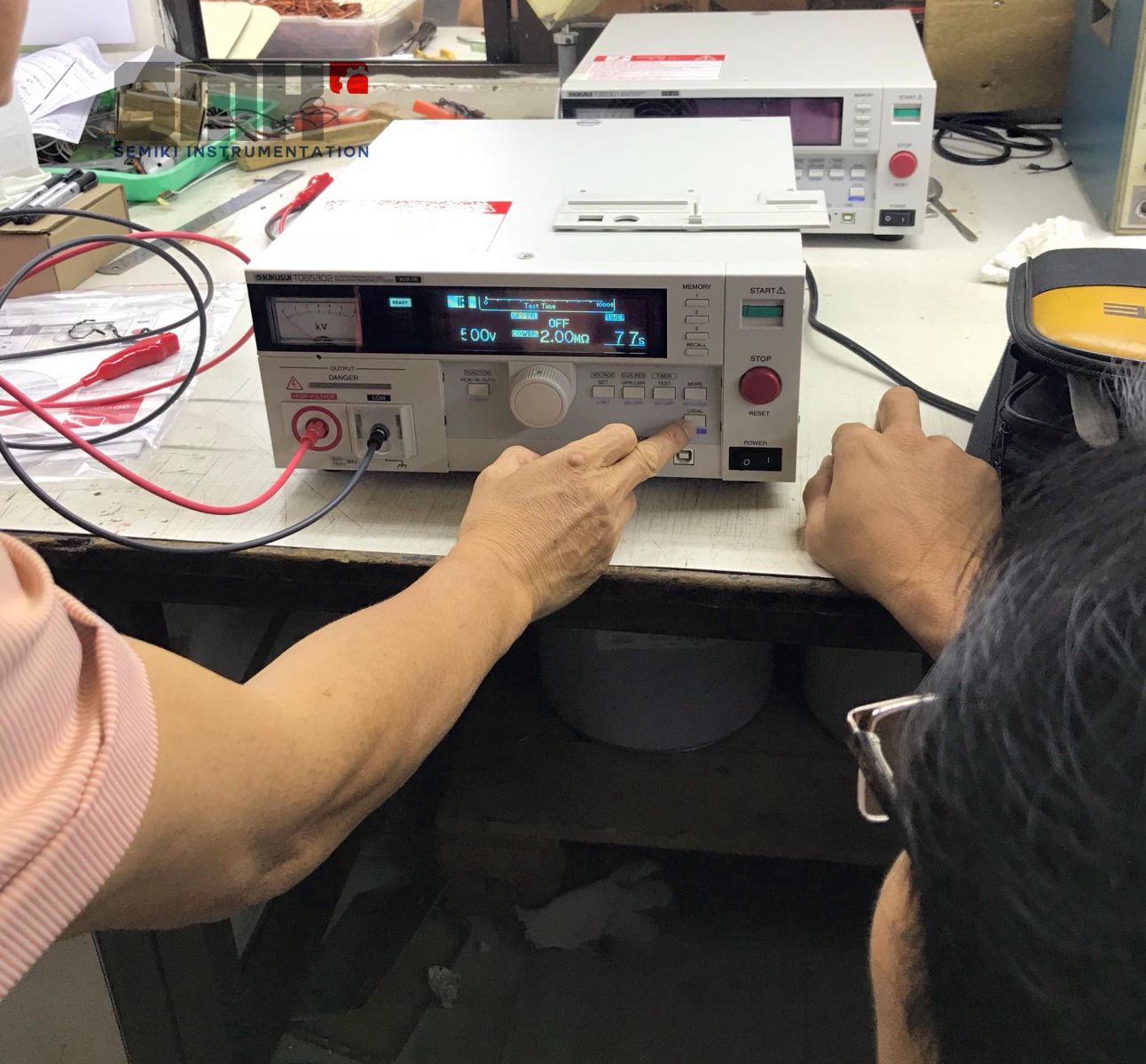
When it comes to testing high voltage cables (HV), the HiPot test is a widely used method. Hipot tests help detect any insulation faults or weaknesses that may affect the future performance and safety of the cable. Two commonly used tests are the Hipot AC and High voltage DC.
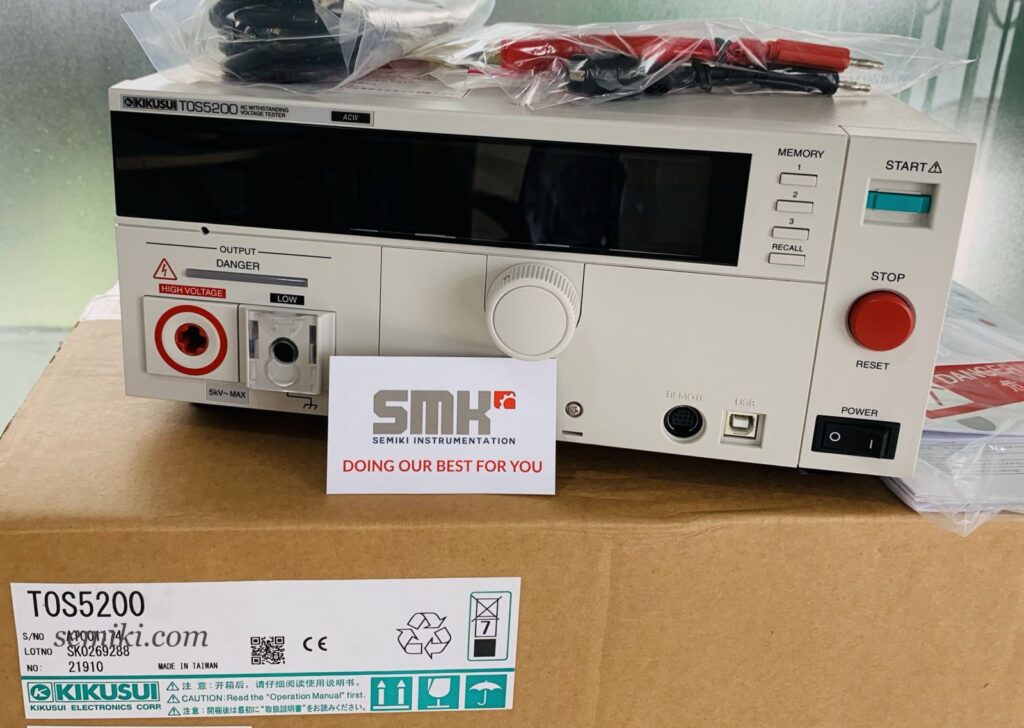
High Voltage Meter hipot AC 5kV KIKUSUI TOS5200
Hipot Test is the abbreviation for High Potential (High Voltage) Test and is also known as Dielectric Withstand Test. Hipot test checks the “ability good insulation ”. Hipot test guarantees no current The Hipot test is the opposite of continuity. The Continuity Test tests the ability of current to flow easily from one point to another while the Hipot Test tests the ability of current to not flow from one point to another (and turns the voltage up very high just to make sure no current flows).
The main difference between these two tests is that the high voltage AC Hipot test applies an alternating voltage to the cable at a frequency of 50 to 60 Hz. On the other hand, the high voltage DC Hipot test applies a direct voltage to the cable.
When comparing, testing High Voltage DC Hipot is known to be a more effective test for HV cables because DC voltage testing can help detect more faults in the system due to its ability to penetrate deeper into the insulation. On the other hand, AC voltage can clear some corona or partial discharge compared to DC voltage, so it may not be visible all the time.
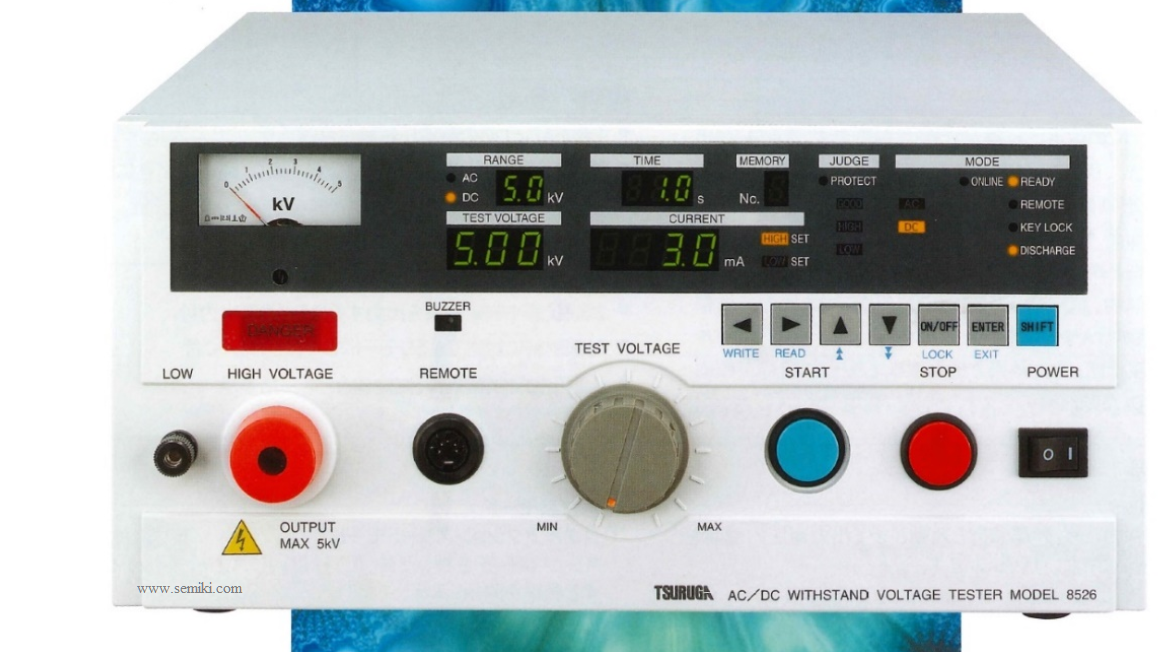
HIGH VOLTAGE METER AC/DC Hipot TSURUGA 8526
Difference between AC and DC Hipot Test
| AC Hipot Test | DC Hipot Test |
| AC high voltage testing simply involves applying a higher AC voltage to the test lead and measuring the leakage current. | High voltage DC is used to determine the insulation resistance of cables by simply increasing the voltage across the test equipment. |
| AC voltage testers are large and heavy. | Compact and lightweight DC high voltage tester. |
| Test high AC voltage using lower voltage. | Higher voltage is used in DC hipot testing. |
| This test uses alternating current (AC) voltage. | This test uses direct current (DC) voltage. |
| AC high voltage tester capable of withstanding higher o/p current. | This test has the potential for very low o/p current. |
| This test only measures total current and does not provide an accurate assessment of leakage current. | By simply reading the actual current, this test provides more accurate leakage current results. |
| This test is effective at both positive and negative voltage polarities. | Since only the insulation inside a single pole is charged, this test does not perform a pole-based test. |
| It is not economical. | It is not expensive. |
| This cannot be used to perform diagnostic testing. | When compared with previous test results, this result can be used as a diagnostic test. |
| This is not widely accepted by security agencies. | It is widely accepted by security agencies. |
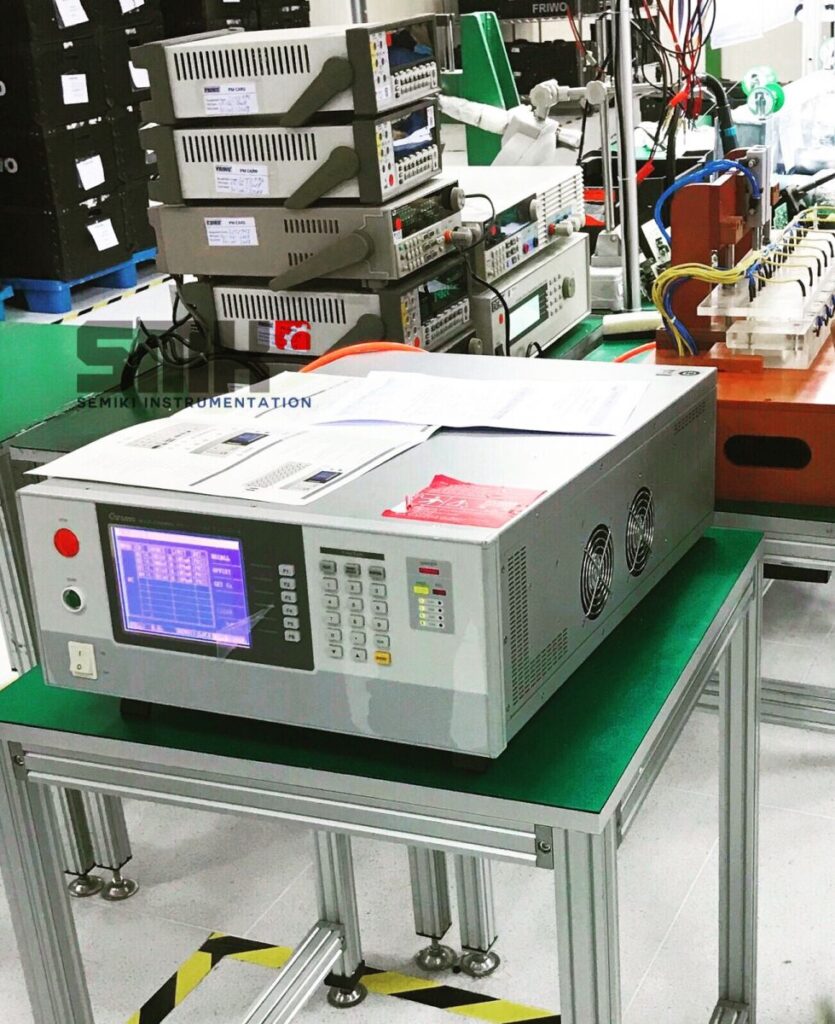
Multi-channel Hipot tester Chroma 19020
In the CH2 AC hipot (DW) test, the test voltage is specified in Vrms, the frequency in Hz, the dwell time in cycles, and the pass/fail thresholds for the Total and Real currents in mciroamps (µA) or milliamps (mA). The test begins with all terminals in the Device Under Test (DUT) held at ground (0V). Each grid, one at a time, is then brought up to high potential by connecting all points in the grid to a high voltage AC source while all other grids are held at ground (see Figure 2). In each step, the current flowing from the source to ground is measured. If the measured current exceeds the specified maximum, the test fails.
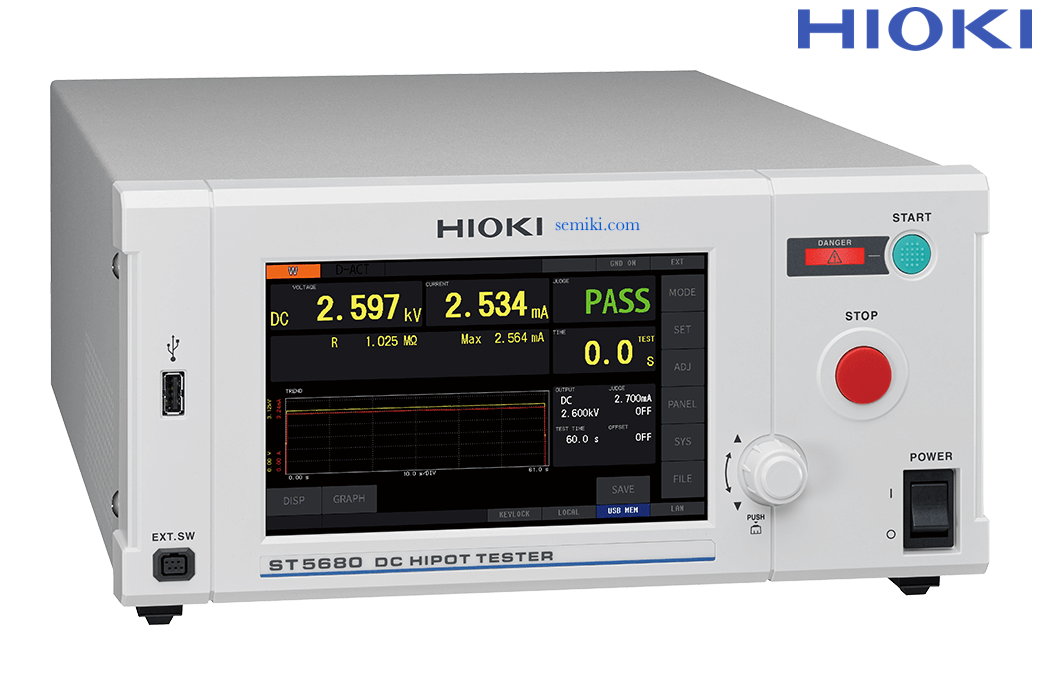
High voltage tester Hipot DC 8kV/100mA HIOKI ST5680
The example below shows the red wire connected to a high voltage source while the green and blue wires are held at ground. The current flowing from the red wire to the green and blue (ground) wires consists of two main components – resistance and capacitance.
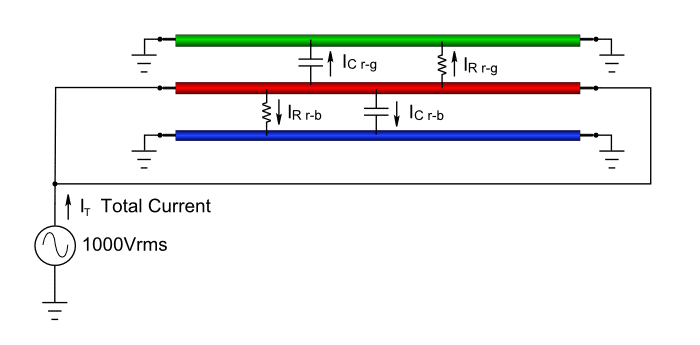
The current flowing through an insulation resistance is proportional to the voltage. When the voltage is zero, the resistance current is zero. When the voltage peaks, the resistance current peaks (see below). This current is often referred to as “in-phase current”, “resistive current” or “true current”.
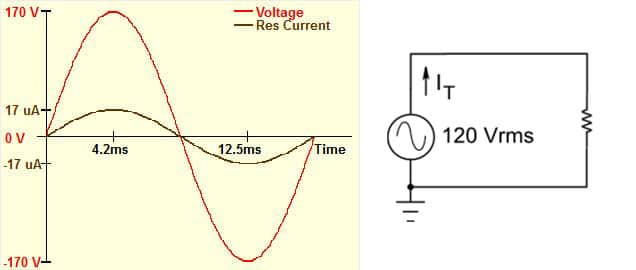
The voltage and current graph of the resistor at 120 Vrms/60 Hz produces 10 Mohms.
Peak voltage is 170V, peak current is 17uA. Note that the resistor current tracks the voltage. When the voltage is 0, the current is 0. When the voltage is at its peak, the current is at its peak.
The current flowing through a net capacitance is proportional to the change in voltage. As the voltage increases, current flows into the capacitance. When the voltage is steady, no current flows. If the voltage increases rapidly, a lot of current must flow into the capacitance. This current is often called “out-of-phase current,” “capacitive current,” or “phantom current.”
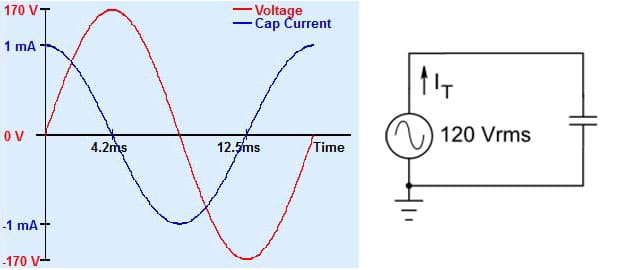
Voltage and current capacitance graph for 120 Vrms/60 Hz driving 15.6nF capacitance.
The peak voltage is 170 V, the peak current is 1.0 mA. Note that if the voltage increases rapidly, the current is large and positive. If the voltage is stable, the current is zero. If the voltage decreases rapidly, the current is large and negative.
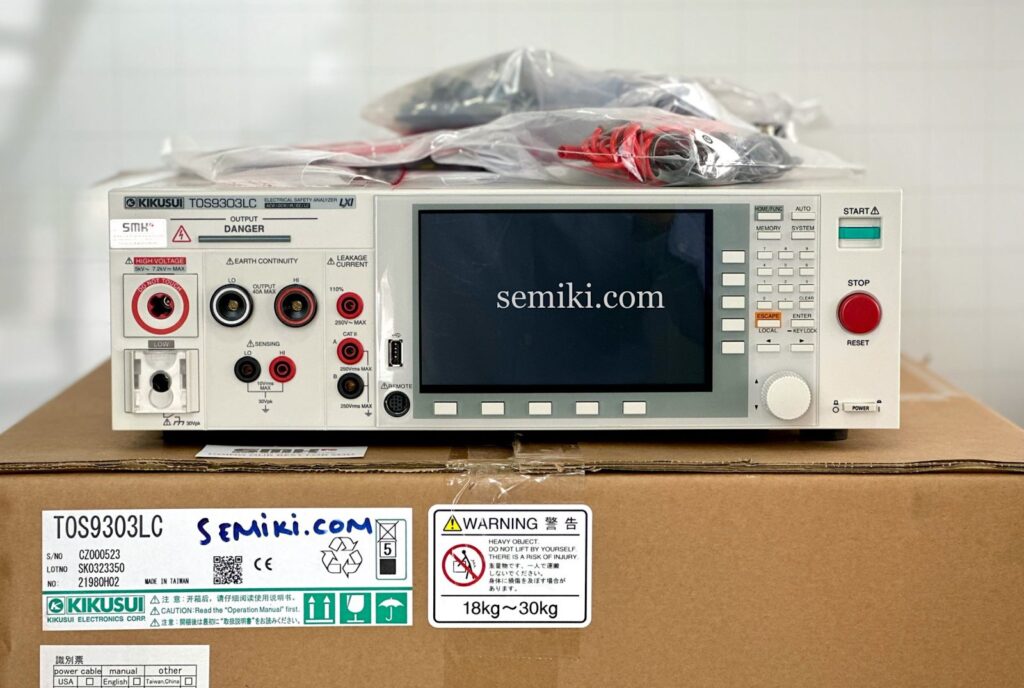
Current TOS9300 is an electrical safety analyzer. High performance allows you to perform electrical safety testing in compliance with many common standards. It includes Hipot, Insulation Resistance, Earth Bonding, Leakage Current (Contact Current and Protective Conductor Current) and Partial Discharge Testing.
Hipot testing is a non-destructive test that determines the adequacy of insulation for transient overvoltages that commonly occur. This is a high voltage test applied to all equipment for a specific period of time to ensure that the insulation is not affected. The hipot test is useful in finding scored or crushed insulation, stray wires or braided shielding, conductive contaminants or corrosion around the conductors, problems with terminal spacing, and tolerance errors in cables. Inadequate leakage and clearance during manufacturing. However, a production line hipot test is a manufacturing process test to determine whether the construction of a manufactured unit is the same as that of a type-tested unit. Some process errors that can be detected by a production line hipot test include, for example, a transformer being wound in such a way that leakage and clearance have been reduced. Such an error could be due to a new operator in the winding department.
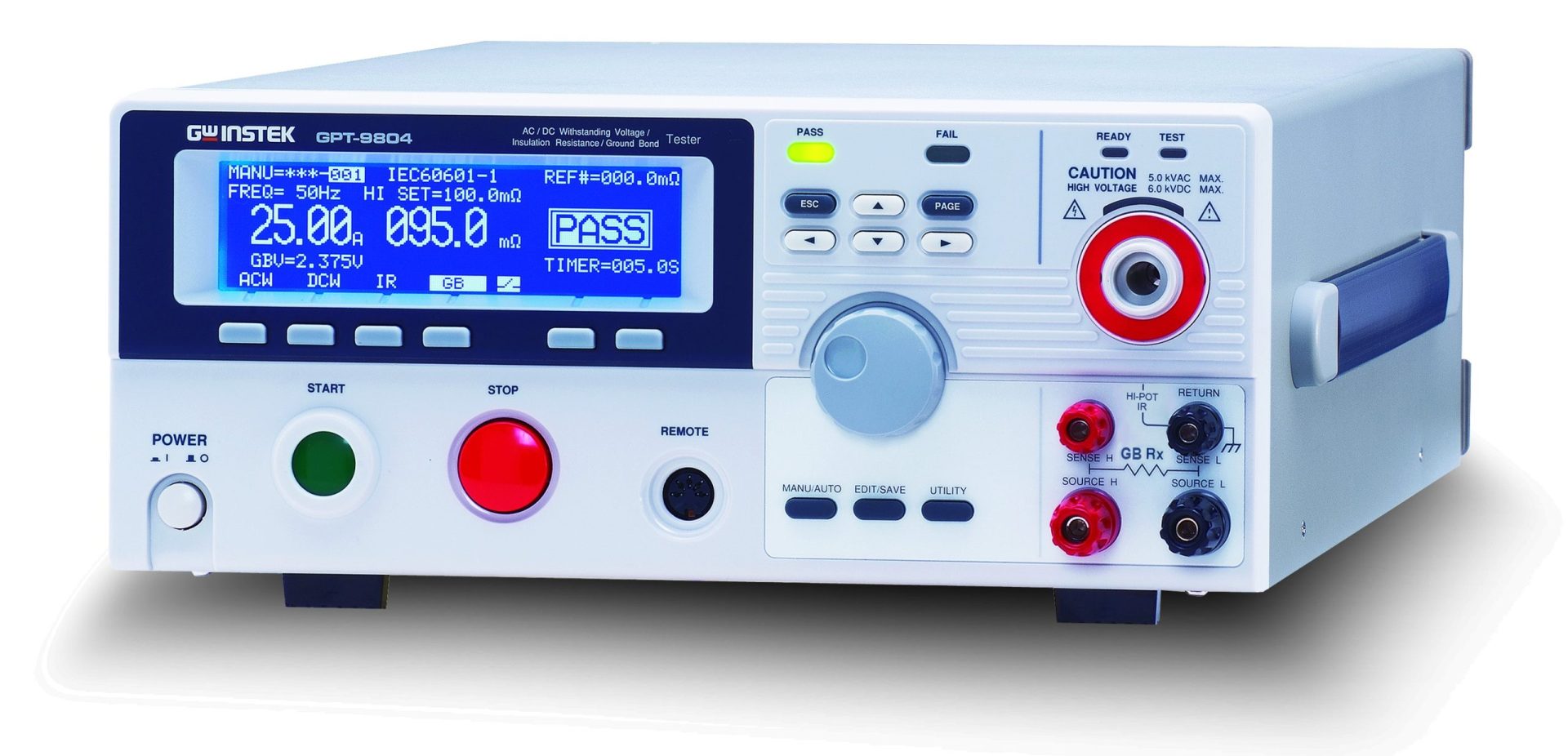
HIGH VOLTAGE SAFETY TESTER GW INSTEK GPT-9800 Series
The HIPOT test is applied after tests such as fault condition, humidity and vibration to determine if any degradation has occurred. Other examples include identifying a pinhole defect in the insulation or finding a large solder footprint. According to the IEC standard, the basic test voltage for the Hipot test is 2X (Operating Voltage) + 1000 V. The reason for using 1000 V as part of the basic formula is that the insulation in any product can be subjected to normal day-to-day transient overvoltages. Tests and studies have shown that these overvoltages can be as high as 1000 V.
Hipot testing is a critical final step in the manufacturing process for most electrical and electronic devices. With advanced functionality and programmable features, today’s Hipot testers simplify electrical safety testing. But before testing begins, manufacturers should be aware of the many updated safety certification standards and their requirements. And test operators should ensure in advance that they have established a safe test environment and fully understand the applicable test protocols.
Contact SEMIKI for Hipot testing and other non-destructive testing for your electric motor today!
CONTACT:
SEMIKI Measuring Equipment Company Limited
Email: sales@semiki.com
Phone: +84 9797 61016